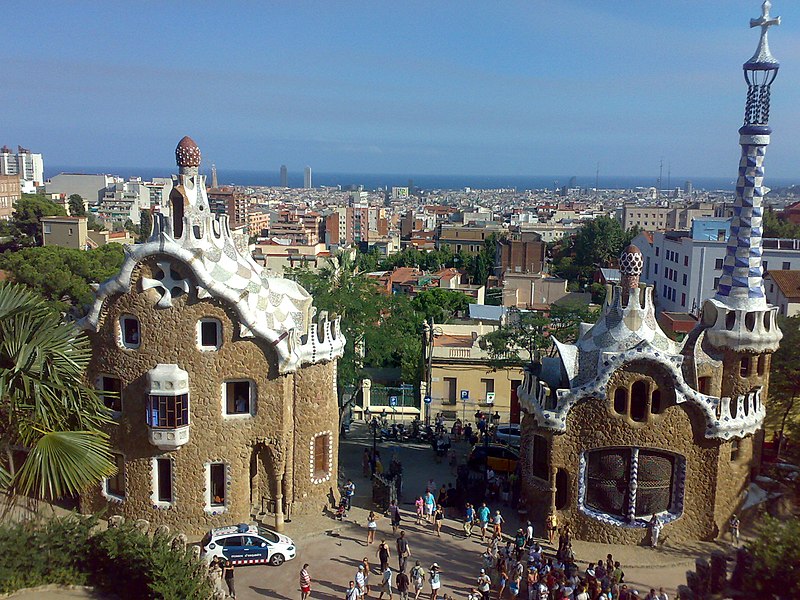Discovering Barcelona: A Journey Through Its Historic Landmarks and Museums
Barcelona, the vibrant capital of Catalonia, is a city that beautifully merges the old with the new. Renowned for its unique architecture, rich history, and cultural depth, Barcelona is a treasure trove for history buffs and art enthusiasts alike. Here’s a detailed guide to some of the city’s most important historical landmarks and museums.
1. Sagrada Familia
Address: Carrer de Mallorca, 401, 08013 Barcelona, Spain

The Sagrada Familia, Antoni Gaudí’s unfinished masterpiece, is arguably Barcelona’s most iconic landmark. Construction began in 1882 and continues to this day, funded entirely by private donations and entrance fees.
- Highlights:
- The Nativity Façade, representing the birth of Jesus.
- The Passion Façade, depicting the suffering and death of Christ.
- The Glory Façade, symbolizing eternal glory.
- The stunning interior, with its tree-like columns and stained glass windows.
2. Park Güell
Address: Carrer d’Olot, s/n, 08024 Barcelona, Spain

Originally intended as a housing development, Park Güell is another of Gaudí’s masterpieces. It is now a public park filled with whimsical architecture and vibrant mosaics.
- Highlights:
- The colorful mosaic dragon (El Drac) at the entrance.
- The serpentine bench, offering panoramic views of Barcelona.
- Gaudí’s house, which is now a museum showcasing his works.
3. Casa Batlló
Address: Passeig de Gràcia, 43, 08007 Barcelona, Spain

This modernist building, redesigned by Gaudí, is famous for its unique skeletal and organic appearance. It is considered one of Gaudí’s most imaginative and artistic works.
- Highlights:
- The building’s facade, which resembles the surface of a calm sea.
- The Noble Floor, with its stunning main hall and exquisite decor.
- The roof terrace, featuring chimneys that look like sculptures.
4. La Pedrera (Casa Milà)
Address: Passeig de Gràcia, 92, 08008 Barcelona, Spain

Also known as Casa Milà, La Pedrera is another of Gaudí’s architectural wonders. It is renowned for its undulating stone facade and twisting wrought-iron balconies.
- Highlights:
- The rooftop terrace, with its surreal chimneys and ventilation towers.
- The Espai Gaudí, an exhibition space dedicated to Gaudí’s life and works.
- The Pedrera Apartment, a recreation of early 20th-century bourgeois life.
5. Barcelona Cathedral (Cathedral of the Holy Cross and Saint Eulalia)
Address: Pla de la Seu, s/n, 08002 Barcelona, Spain
Located in the Gothic Quarter, the Barcelona Cathedral is a stunning example of Gothic architecture. It is dedicated to Eulalia of Barcelona, a young virgin who suffered martyrdom during Roman times.
- Highlights:
- The beautiful Gothic facade and impressive bell towers.
- The cloister, home to 13 white geese.
- The choir stalls, featuring intricate wooden carvings.
6. Palau de la Música Catalana
Address: Carrer Palau de la Música, 4-6, 08003 Barcelona, Spain
Designed by architect Lluís Domènech i Montaner, the Palau de la Música Catalana is a concert hall and a UNESCO World Heritage site. It is renowned for its Modernist architecture and vibrant decor.
- Highlights:
- The stunning stained glass skylight in the main concert hall.
- The elaborate facade, decorated with mosaics and sculptures.
- Regular concerts showcasing Catalan music and international performances.
7. Museu Picasso
Address: Carrer Montcada, 15-23, 08003 Barcelona, Spain
The Picasso Museum houses one of the most extensive collections of artworks by the 20th-century Spanish artist Pablo Picasso. The museum is housed in five adjoining medieval palaces.
- Highlights:
- Over 4,000 works by Picasso, including paintings, drawings, and ceramics.
- The Las Meninas series, inspired by Velázquez’s masterpiece.
- The Blue Period paintings, showcasing Picasso’s early works.
8. Museu Nacional d’Art de Catalunya (MNAC)
Address: Palau Nacional, Parc de Montjuïc, s/n, 08038 Barcelona, Spain
The National Art Museum of Catalonia (MNAC) is housed in the Palau Nacional and features an extensive collection of Catalan art, spanning from the Romanesque period to the 20th century.
- Highlights:
- Romanesque murals, one of the most important collections in the world.
- Gothic art, including altarpieces and sculptures.
- Modern art, featuring works by Catalan artists such as Ramon Casas and Santiago Rusiñol.
9. Fundació Joan Miró
Address: Parc de Montjuïc, s/n, 08038 Barcelona, Spain
Dedicated to the work of Joan Miró, the Fundació Joan Miró is a museum and cultural center. It was designed by Josep Lluís Sert, a close friend of Miró.
- Highlights:
- A comprehensive collection of Miró’s paintings, sculptures, and drawings.
- Temporary exhibitions showcasing contemporary art.
- The outdoor sculpture garden, featuring works by Miró.
10. Hospital de Sant Pau
Address: Carrer de Sant Quintí, 89, 08041 Barcelona, Spain
The Hospital de Sant Pau, designed by Lluís Domènech i Montaner, is a stunning example of Catalan Modernisme. Originally a hospital, it is now a cultural and research center.
- Highlights:
- The beautiful pavilions, connected by underground passages.
- The intricate tile work and mosaics.
- The gardens, offering a peaceful retreat from the city.
Barcelona’s rich tapestry of historical landmarks and museums offers an unparalleled journey through time and art. Whether you’re marveling at Gaudí’s whimsical creations or exploring the works of Picasso and Miró, the city is sure to leave a lasting impression.
By sharing this guide on Egifta Gift’s website, you can inspire your followers to explore the cultural and historical depths of Barcelona, making their trip an unforgettable experience.
Photos: Wikipedia



